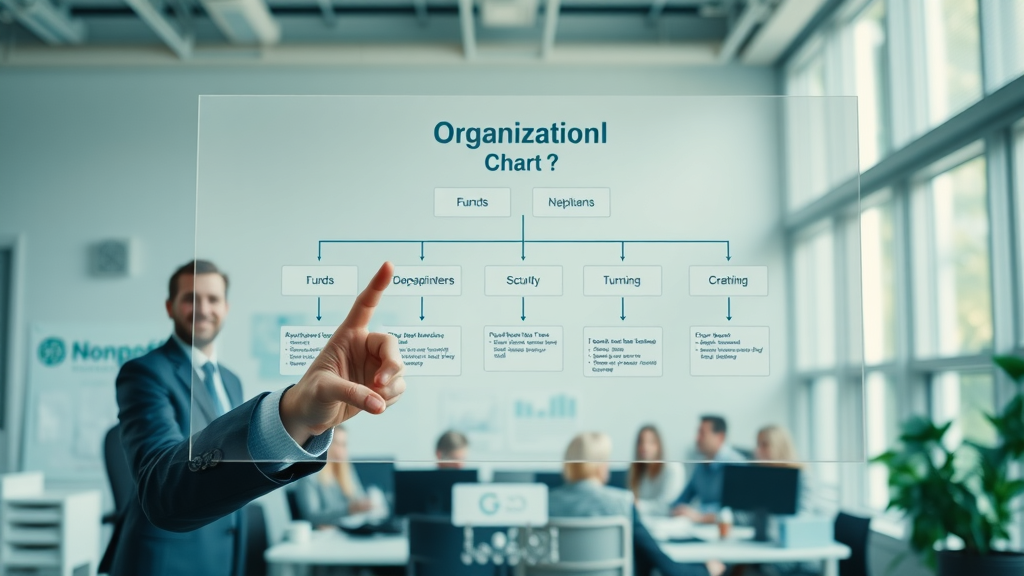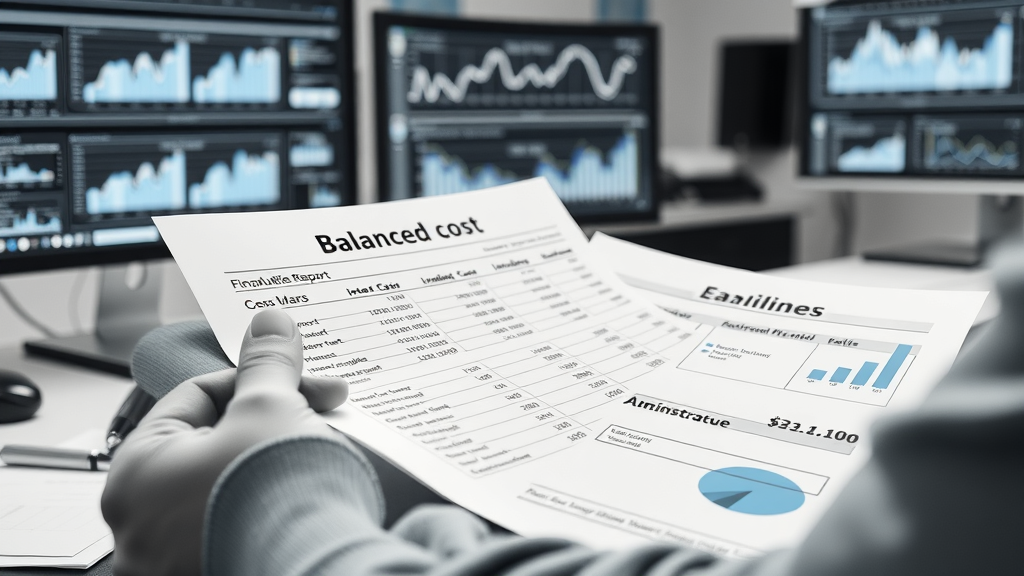Did you know that effective resource allocation in nonprofits can increase mission impact by up to 30%? That means nearly a third more children fed, families housed, or communities empowered—without raising a single extra dollar. For organizations in the nonprofit sector, resource allocation isn’t just a matter of line items on a budget; it’s about directing every penny, person, and piece of equipment where it can do the most good. In this comprehensive guide, we’ll break down strategies, cost allocation methods, and practical steps to help you maximize every dollar, ensuring your nonprofit organization achieves its mission efficiently and sustainably.
"According to the National Council of Nonprofits, effective resource allocation in nonprofits can improve mission impact by up to 30%."

Unlocking the Impact of Resource Allocation in Nonprofits: A Data-Driven Approach
The path to maximizing every dollar for nonprofit organizations lies in leveraging data-driven resource allocation techniques. Studies in the nonprofit sector underscore that organizations using strategic allocation methods are consistently able to demonstrate higher program impact with equal or fewer resources. Whether it’s cost allocation for program service expenses, or monitoring fundraising expenses to ensure that their resource investments are justified, nonprofits can experience notable improvements in both efficiency and transparency.
Decision makers often face competing demands for limited resources. By prioritizing programs through robust allocation strategies backed by data and financial management best practices, they create a transparent and equitable distribution plan. This data-driven approach not only earns the trust of stakeholders—donors, boards, and beneficiaries—but also builds a framework for sustainable growth. As fundraising investments and administrative expenses rise, harnessing these insights makes the difference between survival and amplified impact for every nonprofit organization.
What You'll Learn: Key Insights into Resource Allocation in Nonprofits
- The fundamental concepts of resource allocation in nonprofits
- Best cost allocation and allocation methods
- How to distinguish between direct and indirect costs
- Steps for effective financial management in nonprofit organizations
- Tools and resources to optimize fundraising expenses and program expense allocation
Understanding Resource Allocation in Nonprofit Organizations
Defining Resource Allocation in Nonprofits
Resource allocation in nonprofits refers to the process of distributing an organization’s available financial, human, and material resources among its various programs, services, and administrative activities. Unlike for-profit enterprises, nonprofit organizations must carefully balance mission-driven program expenses, personnel costs, and a variety of allocation decisions to ensure that each area receives the proper level of support. The ultimate objective is to maximize mission impact, rather than financial profit.
Allocating resources strategically means analyzing which initiatives will yield the greatest benefits with the available time, funds, and staff. Allocation methods—which may involve direct allocation for project-specific costs or indirect allocation for shared costs like utilities or payroll expense—are often made based on a blend of current needs, projected outcomes, and donor intent. With clear organizational charts and thorough documentation, nonprofits can visualize the flow of funds and ensure that their resource allocation decisions meaningfully contribute to the overall mission.

The Importance of Resource Allocation in the Nonprofit Sector
In the nonprofit sector, resource allocation is essential for transparency and operational success. Donors, stakeholders, and regulatory bodies expect organizations to prove their stewardship by showing where every donated dollar goes—a vital step in long-term trust-building and accountability. Mismanaged cost allocation or failure to distinguish between direct and indirect costs can result in misinformed decisions and potential loss of funding.
Moreover, efficient allocation directly influences organizational sustainability. For example, choosing appropriate allocation strategies can mean the difference between expanding a program or suspending it due to financial shortfalls. This is why many nonprofit organizations establish routine allocation processes and rely on clear data about administrative expense, program expense, and fundraising expenses. A well-planned approach aligns with best practices in financial management, aiding the organization in delivering greater service to beneficiaries while satisfying donor expectations.
Common Resource Allocation Methods Used by Nonprofit Organizations
Nonprofits employ a range of allocation methods to distribute costs across activities. The direct allocation method assigns costs directly to the projects or activities responsible for incurring them, such as staff salaries for grant-funded work. Indirect allocation, on the other hand, spreads overhead or shared costs—like rent and insurance—across multiple projects using standardized formulas. Each method comes with its own merits and is chosen based on the unique structure of each nonprofit organization.
Selecting the right cost allocation method depends on factors such as organizational size, complexity, and donor restrictions. Whether using the step-down method, activity-based costing, or a simplified percentage formula, the key is ensuring that allocation is consistent, accurate, and justifiable. Careful documentation and regular review of these allocation strategies can help nonprofits adapt to changing conditions, comply with regulations, and ultimately add more value to their programs.
| Allocation Method | How It Works | Pros | Cons |
|---|---|---|---|
| Direct Allocation | Assigns expenses directly to specific programs or services | High accuracy, easy to track Transparent for funders |
Time-consuming Impractical for shared costs |
| Indirect Allocation | Distributes shared costs (overhead) across programs via a set formula | Efficient Addresses shared resources |
Less precise Requires periodic review |
| Step-Down Method | Allocates overhead via a step-wise approach through departments | More equitable for large orgs Ensures fair distribution |
Complex Requires robust tracking systems |
| Activity-Based Costing | Allocates costs to programs based on specific activities and usage | Most accurate for diverse orgs Detailed insights |
Resource-intensive Needs detailed data |
Cost Allocation: Making Every Dollar Count in Nonprofit Organizations
Distinguishing Direct Costs, Indirect Costs, and Administrative Expense
In the context of the nonprofit sector, understanding the difference between direct costs, indirect costs, and administrative (overhead) expense is critical. Direct costs are those easily attributable to a specific program service—like instructor fees for an education workshop or materials for a housing project. Alternatively, indirect costs (or overhead) include expenses that serve multiple programs, such as IT support or facilities maintenance.
Administrative expense, sometimes referred to as management and general, covers executive salaries, office supplies, fundraising expenses, and other organizational-level costs. Clear cost allocation methods help nonprofits demonstrate to supporters and regulators that donations are being managed effectively. When reporting on total expenses, nonprofit organizations must follow established protocols to allocate both direct and indirect costs appropriately, ensuring compliance and transparency.

Allocation Process: Step-by-Step Guide for Nonprofits
Implementing a successful allocation process in nonprofits involves several key steps. First, assess all programs and supporting activities to determine which costs are direct and which are indirect. Next, select an appropriate allocation method based on operational needs and donor expectations. Calculate the total expenses for each area, then apply the chosen allocation strategy to distribute costs accordingly.
Document every step, from data gathering to the formulas used in indirect allocation, to ensure transparency and replicability. After initial allocation, review and adjust regularly as new funding streams emerge or program needs shift. Continuous monitoring guarantees alignment with financial management best practices and maximizes the impact of every allocated dollar.
Cost Allocation Methods: Choosing the Right Fit for Your Nonprofit Sector
Every nonprofit organization is unique, meaning that the cost allocation method chosen should reflect size, structure, and mission priorities. Smaller nonprofits often rely on straightforward direct allocation due to limited complexity, while larger organizations may opt for step-down or activity-based costing to handle more layers of expenses. Whatever the choice, the goal remains the same: ensuring that their resource allocation aligns with core objectives and provides accurate reporting for funders.
Evaluate options periodically to make sure methods reflect any organizational changes. Consider consulting with financial management professionals who understand nonprofit sector best practices, especially when allocation strategies become more complex. A solid cost allocation system gives your nonprofit the power to both justify and optimize its spending, paving the way for mission-driven growth.
Strategic Resource Allocation Decisions in Nonprofit Organizations
Key Factors Influencing Allocation Decisions
Resource allocation decisions are influenced by several interrelated factors, including organizational priorities, funding restrictions, data on program impact, and cost-benefit analyses. For instance, some grants may be earmarked for specific program service expenses, requiring a more direct allocation approach, while other resources may be more flexible.
Decision-makers must also consider available personnel, current fundraising investments, and anticipated indirect costs. By using clear criteria and engaging diverse stakeholders—such as program leads and financial staff—nonprofit organizations ensure that their resource allocation remains both responsive and responsible, balancing mission achievement with fiscal sustainability.

Incorporating Personnel Costs and Program Expense for Greater Impact
Personnel costs often represent the largest portion of any nonprofit organization’s budget. Accurate resource allocation must therefore consider how staff time and expertise contribute to direct program service delivery and administrative support. Assigning payroll expenses to projects, tracking staff allocation across multiple initiatives, and differentiating between direct and indirect costs related to personnel are all essential practices.
Similarly, careful attention to program expenses—from supplies to contracted services—ensures that budgets reflect actual need and results. By consistently reviewing how both personnel and program costs are distributed, nonprofits can make data-backed adjustments, enhancing impact and visibility for donors, beneficiaries, and staff alike.
Financial Management Best Practices for Resource Allocation in Nonprofits
Adhering to robust financial management practices is key to successful resource allocation in nonprofits. This means implementing strong internal controls, regular financial reviews, and comprehensive documentation of all allocation processes. Standardized policies, such as requiring dual approval for major allocation decisions, deter misuse and assure stakeholders of financial integrity.
Additionally, investing in modern accounting systems can streamline cost allocation, track expenses in real time, and generate reports tailored to donor and regulator requirements. Continual staff training and updates to allocation strategies keep your nonprofit adaptive to new challenges and opportunities, ensuring lasting mission impact.
Essential Lists: Tools & Techniques to Optimize Resource Allocation in Nonprofit Organizations
- Assessing organizational needs
- Selecting effective allocation methods
- Monitoring fundraising expenses
- Using technology for efficient cost allocation
- Reviewing allocation process regularly
Watch: Video Tutorial: Best Practices for Resource Allocation in Nonprofits
People Also Ask About Resource Allocation in Nonprofits
What are examples of resource allocation?
Resource allocation in nonprofits includes distributing grants to various programs, allocating staff hours to projects, and budgeting funds for fundraising expenses or administrative costs.
What is the meaning of resource allocation?
Resource allocation in nonprofits refers to systematically assigning available financial, human, or material resources to specific projects or goals to foster organizational mission success.
Why is resource allocation important in an organization?

Effective resource allocation in nonprofits ensures transparent, goal-oriented use of limited resources, helping organizations achieve maximum impact and maintain stakeholder trust.
How to perform resource allocation?
Perform resource allocation in nonprofits by: assessing needs, analyzing available resources, using appropriate allocation methods, and continuously monitoring and optimizing the allocation process.
FAQs: Resource Allocation in Nonprofits
-
What are the challenges of resource allocation in the nonprofit sector?
Challenges include limited resources, managing donor restrictions, balancing program and administrative needs, and ensuring transparency in allocation decisions. Nonprofits must regularly assess and document their allocation process to avoid inefficiencies. -
How does resource allocation affect fundraising expenses?
Efficient allocation ensures fundraising expenses are justified by the return on investment and their contribution to mission-critical outcomes. It prevents over-investment in fundraising efforts and allows more funds to reach program services. -
What is the best allocation method for smaller nonprofit organizations?
For smaller organizations, the direct allocation method is typically recommended due to its simplicity and transparency. As organizations grow or diversify, incorporating indirect allocation methods can enhance accuracy and fairness.
Key Takeaways: Maximizing Every Dollar Through Effective Resource Allocation
- Resource allocation in nonprofits drives mission success.
- Choosing appropriate cost allocation methods is essential.
- Continued evaluation and optimization are crucial for long-term impact.
Watch: Short Explainer: The Role of Financial Management in Nonprofit Resource Allocation
Conclusion: Making Smart Resource Allocation Decisions in Nonprofit Organizations
"Successful resource allocation in nonprofits isn’t about spending less; it’s about maximizing the impact of every dollar."

Ready to Optimize Your Resource Allocation in Nonprofits?
Call me the Chaplain 786-333-5270
Sources
- https://www.councilofnonprofits.org/tools-resources/cost-allocation-methods
- https://www.nonprofitaccountingbasics.org/reporting-operations/cost-allocation
- https://www.nolo.com/legal-encyclopedia/nonprofit-financial-management-overview.html
- https://www.idealist.org/en/careers/cost-allocation-in-nonprofits
Effective resource allocation is crucial for nonprofits aiming to maximize their impact. To delve deeper into this topic, consider exploring the following resources:
- “Essential Practices for Effective Resource Allocation in Nonprofits” (altruflo.com)
This article outlines key strategies such as establishing clear priorities, developing comprehensive budgets, and implementing data-driven decision-making to enhance resource allocation.
- “Nonprofit Resource Allocation: How to Optimize Your Team, Time, and Materials” (missionmetrics.org)
This guide provides a step-by-step approach to assessing organizational needs, inventorying available resources, and matching them effectively to maximize impact.
By integrating these practices, nonprofits can ensure that every dollar and resource is utilized efficiently, leading to greater mission success.
 Add Row
Add Row  Add
Add 




Write A Comment